Rejoice, let Mother Church also rejoice,
arrayed with the lightning of his glory,
let this holy building shake with joy,
filled with the mighty voices of the peoples
When the deacon sings this verse at the Easter Vigil, he is putting into words and song the overwhelming sentiment of the Church for her resurrected Lord—joy!
Who could not be happy at the Resurrection of Jesus Christ who freed us from the power of sin and darkness?
Rejoicing is the order of the day at Eastertime, not as a superficial emotion but like the feeling of relief that comes over you after a storm passes and you realize you’ve been spared by some protective force of good.
A Clarinet Saved
The storm metaphor is especially appropriate for our subject: the famed clarinetist Pete Fountain. They called him simply, “Mister New Orleans” because he was such a classic symbol of the laid-back exuberance of “The Big Easy” (N.O.’s most common nickname).
 But it’s more than just a question of local identity. As one writer put it: “His claim to the title runs much deeper: Pete Fountain is joie de vivre personified.”
But it’s more than just a question of local identity. As one writer put it: “His claim to the title runs much deeper: Pete Fountain is joie de vivre personified.”
One scene toward the end of his life captures the drama and joy of his whole life. He and Beverly, his wife of sixty-five years, owned a home on Bay St. Louis just outside New Orleans, which received the full brunt of Hurricane Katrina in 2005. Their home was completely destroyed and all their belongings were lost.
As the storm approached, they waited until the last minute to evacuate, but when it finally looked hopeless, they decided to leave. That ultimately saved their lives. On the way out the door, Pete grabbed his clarinet case, which he had placed on a stand near the entrance after his show a few nights before.
Other than the clothes on their backs, his famed LeBlanc clarinet with its crystal mouthpiece was the only personal possession that survived the storm unscathed.
O Happy Fault
But that’s not the only happy instance of this man’s life. Pete Fountain’s clarinet happiness began early, though it has a touch of irony to it.
 From an early age, he suffered from chronic lung infections, which was pretty ominous for a child in the 1930s. He could have easily developed pneumonia and died. But here’s the irony: his underdeveloped lungs could almost be called a providential weakness.
From an early age, he suffered from chronic lung infections, which was pretty ominous for a child in the 1930s. He could have easily developed pneumonia and died. But here’s the irony: his underdeveloped lungs could almost be called a providential weakness.
His parents tried every medication to remedy the problem but to no avail. Finally, a kindly and wise doctor recommended that they buy the boy a musical instrument, particularly one that he would have to blow into in order to make sound. The doctor believed the wind instrument would exercise the lungs in a way that would ultimately help the child.
When his dad took little Pete to the music store that day, he wanted a drum (what boy wouldn’t?), but his dad was following doctor’s orders and made him get a woodwind. The boy chose a clarinet—and the rest is history. By the age of 13, he was playing professionally!
In the Easter chant, called the Exsultet, which is sung at the Easter Vigil, the deacon sings a line from St. Augustine who called Original Sin a “happy fault”.
Oh, truly necessary was Adam’s sin, that was blotted out by the death of Christ! O happy fault, that was worthy of such and so great a Redeemer!
Did you notice how the Exsultet calls it the “necessary sin” of Adam? It really is one of the most striking paradoxes of our Faith. But the salvation of the entire human race resulted from the remedy for that sin.
I can understand a little of the theology behind it when I look at this incident in the life of Pete Fountain. Weak lungs are not a sin, but they are a physical fault that could have led to his death.
But because of that happy fault, and his boyhood challenge to overcome it, Pete Fountain gave us over half a century of exuberant, gushing, joyful music. (I’m sure you’ll see what I mean in the video clips below.)
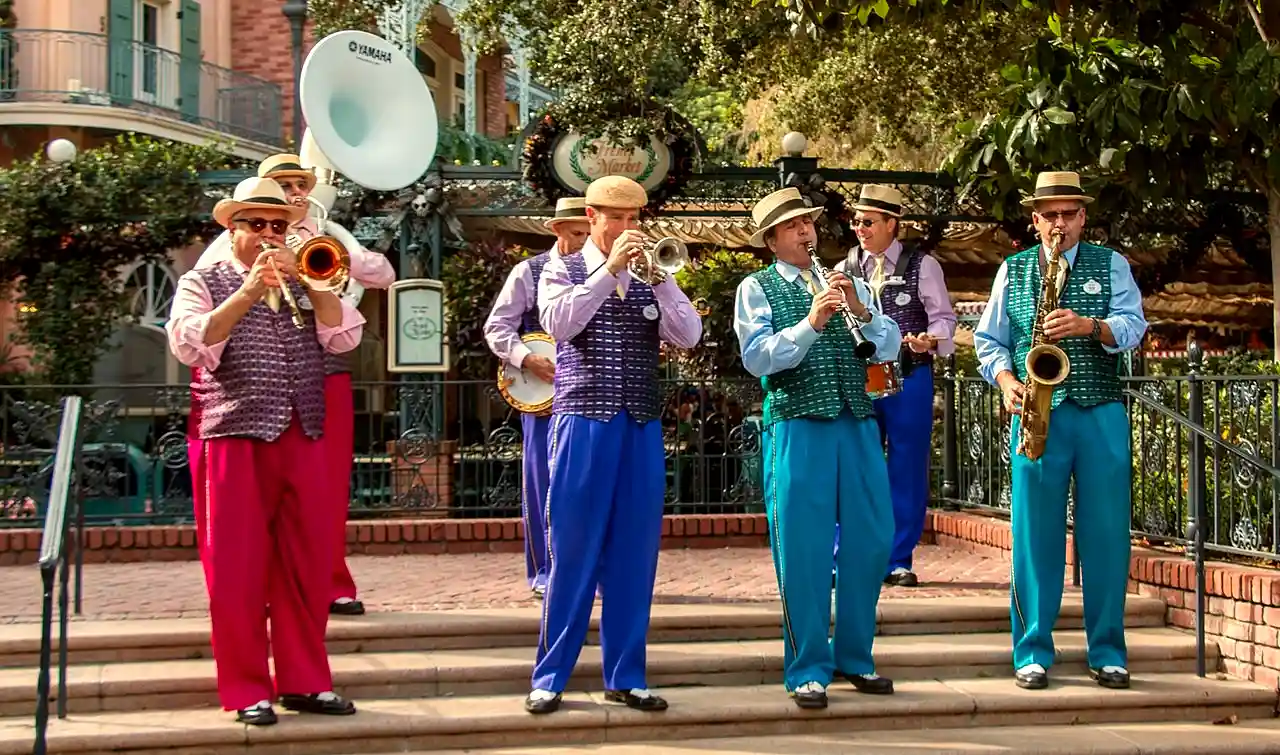
The Jumbalaya Jazz (Dixieland) Band
With a Personality to Boot
I think I would have liked Pete Fountain because he had a nice, wry sense of humor (which I approve of wholeheartedly!) To me, a good sense of humor is a hallmark of joy in a world that is often down and depressing. Pete was especially known for his great one-liners.
In 1957 Lawrence Welk invited him to play with his orchestra. It turned out to be a two year period that laid the foundation of Pete Fountain’s celebrity status. Yet, not all went well in Welk’s land of New Year’s Eve bubbles and big bands.
The 1958 Christmas show featured the classic carol, “Silver Bells”, and Pete wanted to make it a little “jazzier”—I mean what’s a jazz clarinetist to do?—but the rather formal band leader (Welk himself) refused the exuberant request.
Well, Pete jazzed it up anyway during the live show, and the audience loved it, which was not exactly how Lawrence Welk took that little act of defiance. And, not surprisingly, Pete Fountain left the show soon thereafter!
Did he take responsibility for the separation? Not in the slightest. His one line summary captured the stylistic differences between the big band and Dixieland: “Champagne and bourbon don’t mix.” And that was the whole of it! A few more Fountain quips for your entertainment:
- When he formed a group of musicians that would stroll down Bourbon Street on the morning of the yearly Mardi Gras celebration, he called it the “Half-Fast Walking Club” in reference to the pace with which they moseyed on down the parade route. He said he’d be continuing the tradition for “as long as I can toot and scoot.”
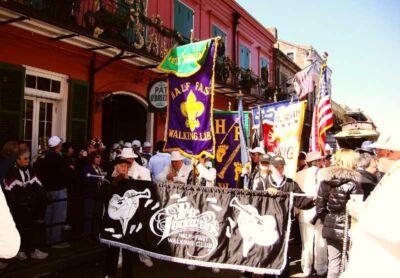
- His wife Beverly must have been a riot too. She and the band members’ wives formed their own group and, playing on the title of the men’s group, called it “The Better Halves”.
- When he knew had to cut down on his drinking, he made fun of the whole incident by saying, “Things change. Nothing stays the same. I used to be taller.”
- And commenting on the 1960s, he said: “The whole world going crazy — and I was in there with ‘em.”
- When he finally retired and did his last performance at his club in New Orleans, he lightened a sad moment with humor: “It’s been 26 years here. It went by half-fast, and so did my liver.” (Quotes source, 64 Parishes.)
Even his stage name, Pete Fountain, was a joyous repackaging of his Cajun birth name: Pierre Dewey LaFontaine Jr.
Joy Comes in Many Packages
Fountain’s particular brand of spreading joy was playing the clarinet, with a wry sense of humor to go with it. But some of his accomplishments were groundbreaking. He and his lifelong friend, jazz trumpeter Al Hirt, singlehandedly popularized the Dixieland style.
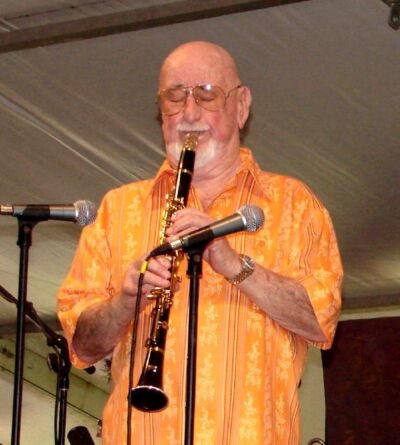 As a kid I remember hearing the sounds of what my mother used to call the “licorice stick” (clarinet) coming through the Big Band radio station that I discovered one day, and I recall being absolutely mesmerized that anyone could play the instrument like that. It was Pete Fountain and my first exposure to Dixieland. I’ve been listening ever since.
As a kid I remember hearing the sounds of what my mother used to call the “licorice stick” (clarinet) coming through the Big Band radio station that I discovered one day, and I recall being absolutely mesmerized that anyone could play the instrument like that. It was Pete Fountain and my first exposure to Dixieland. I’ve been listening ever since.
Pete Fountain never did anything else but play the clarinet, yet he brought an upbeat joy into the lives of millions through his extreme talent and dedication to music. He didn’t have to do anything else. It was enough.
During his long career, he not only played for Lawrence Welk but appeared on Ed Sullivan’s show, Johnny Carson’s show (59 times), and the New Orleans Jazz Festival (40 times). He recorded over 100 albums, performed for the opening of the New Orleans Superdome (1975), and treated a Polish pope to a bit of the New Orleans spirit during the papal visit in 1987.
Easter Joy
Like the Easter Exsultet, Pete Fountain gave us words and music, joy and grace, but with a particular Louisiana flair!
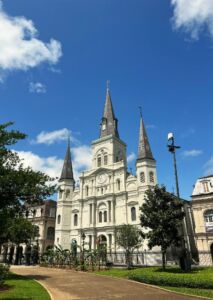 Toward the end of his life he was plagued by heart problems and ultimately died of heart failure in 2016 at the age of 86.
Toward the end of his life he was plagued by heart problems and ultimately died of heart failure in 2016 at the age of 86.
His manager said that even while he was asleep in his bed on his last day, his fingers were moving as if playing his instrument and his foot was tapping unconsciously. “His body gave out on him, but [the] music was still in him,” the manager noted. I’ll say!
At the news of his passing, Nawlins (New Orleans) came out in droves. The funeral, as you might imagine, was a brief moment of mourning mixed with deepest joy.
After the funeral Mass at St. Louis Cathedral, the huge jazz procession drew his casket down Bourbon Street, a route he had traveled hundreds of times before. It was a final tribute to the gift Pete Fountain gave to the world by sharing his musical talent with everyone.
All in all, Pete himself would probably say that he had a good long stroll down the Big Easy Street—and left us all better off for it.


Pete Fountain’s Live Performances
These 4 feature music videos are chosen because they are short and very expressive of the Pete Fountain spirit of joy.
Pete Fountain on the Lawrence Welk Show (2:10)
Pete Fountain – A Closer Walk With Thee (2:11)
Pete Fountain – Cheek to Cheek (2:54)
Pete Fountain “Tiger Rag” on The Ed Sullivan Show (2:29)
———-
Photo Credits: Images via Wikimedia Commons: Younger Pete (ABC Television, Public domain); Older Pete (I, Sumori); Jumbalaya Jazz Band (HarshLight from San Jose); Half Fast Walking Club (Howie Luvzus); Pete Waving (NawlinWiki); parade and musical images from Pixabay and Unsplash.
—–
[Note: This article is a reproduction of the Sacred Windows Email Newsletter of 5/04/24. Please visit our Newsletter Archives.]







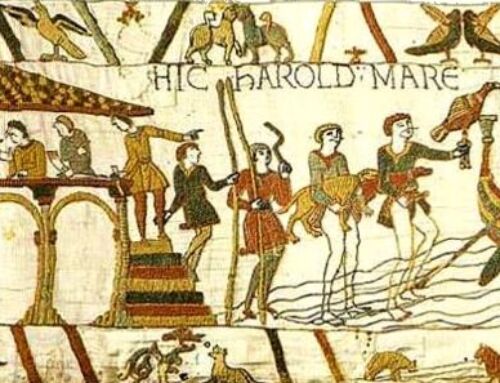

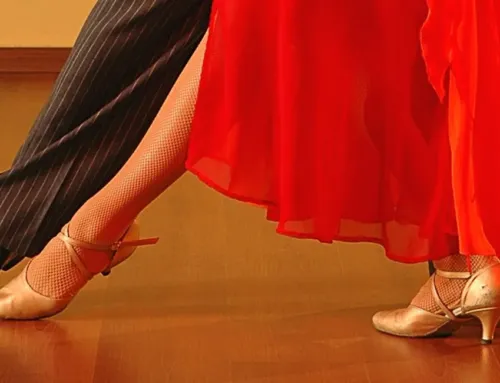
Leave A Comment